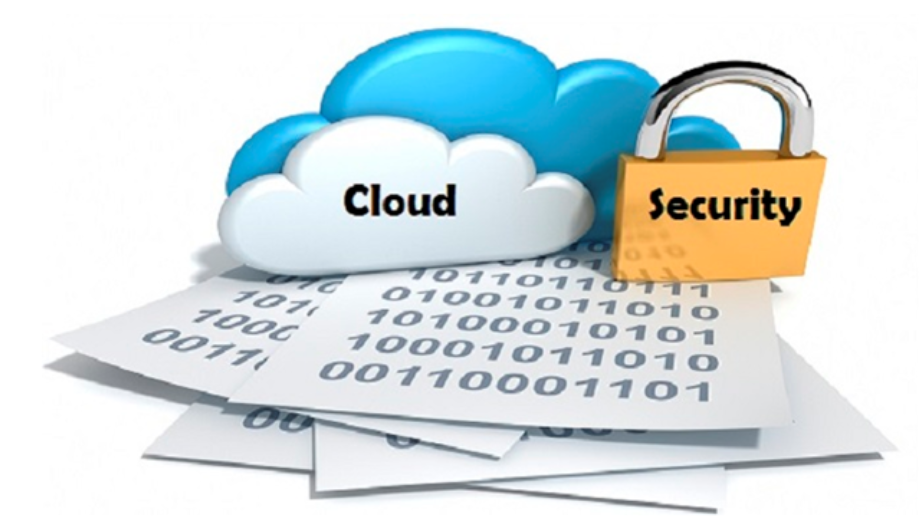
How a BDE Connects Business Vision With Technology
How a BDE Connects Business Vision With Technology Kumkum Kumari 21/11/2025At Speqto, we work with organizations that are constantly evolving entering new markets, scaling operations, or […]


Cloud computing is one of the latest innovations of the technological world. Cloud computing is a cheaper and more efficient alternative to the current technologies we use. Anything from setting up a virtual computer, hosting a website or even carrying out advanced machine learning and artificial intelligence computations cam be completed using services offered by cloud computing. With a wide range of cloud computing services offered by Amazon, Microsoft and Google, we are spoilt for choice. With every new technological innovation, the first question we have to ask is “Is the services or the platform safe for usage”? Over the course of this blog, we will address this very concern about security of the cloud computing services.
The first step in understanding the security of cloud computing is understanding its operations. Cloud computing works on the principle of remote storage or remote access. Anyone can create an account on the cloud platform and use their services. A majority of the services are used by companies rather than individual users. The range of services offered by cloud computing platforms include
The service used depends on the specific requirement of the user. When a company is using the above services from the cloud computing platforms, the first step is checking the security levels of the platform to protect the services and the data being stored on the cloud. Cloud Computing is able to increase the security standards by using the following approach. In this approach, the vendor is able to understand the specific requirements of the users and the type of access that needs to be provided to the user. Based on extensive research, the cloud computing platforms have managed to establish the security standards using the following 10 step approach.
1. Understand the Shared Responsibility Model
The first step in establishing the security of the platform is understanding the responsibility of the users and how the responsibility of a single account is split between the users of the account. The first step involves dividing the security of the platform into two groups, i.e. the user and the platform. Both these groups need to complete their responsibility to ensure that the platform remains safe throughout. It is the platform’s responsibility to make sure that the services are not compromised by any means. It is the responsibility of the user to ensure that the access point to the platform is safe and secure. In addition to this, the user can add encryption to the data being stored on the cloud computing platform.
2. Follow IAM Best Practices
Identity and access management services is a crucial component of the security measures implemented by the cloud computing platforms. A majority of the tasks under this category is the responsibility of the user. The login credentials must be changed regularly and the number of the people who have access to the account should be monitored. By recommending the users to implement the IAM best practices, the cloud computing platforms have managed to be secure and safe.
3. Manage OS-level Access and Keep Ec2 Instances Secure
One of the most common cyber security attacks is using the vulnerabilities of the OS to gain control over a machine. It is the responsibility of the user to ensure that the OS is safe and secure. They can use a vulnerability report of the OS to take appropriate measures and steps. The cloud computing platforms make a huge list of recommendations on how, when and where to access the cloud based services.
Cloud computing platforms ensure that the data that is being stored on their platform is encrypted at all times. This ensures that even during a break in, the data is not compromised. In addition to this, these platforms ask the users to encrypt the data from their end as well before upload. This double encryption method ensures the safety and security of the data.
1.Follow Security Best Practices for Cloud Computing Database and Storage Services
All the databases and servers used by the cloud computing platform are always encrypted with the highest level security measures and protocols. This makes accessing the system impossible. Some of the security measures used are some of the highest rated measures in the world.
2. Network Security
Cloud computing platforms recommend using VPNs and secure networks while accessing the platform and its services. Using the internet or the network to gain access to a device or a platform is one of the easiest processes. Hence it is critical for the user to protect the network before gaining access to the cloud computing platform.
3. Web Application Security
Firewalls and analysing the web traffic is one of the most influential security measures adopted by cloud computing platforms. All the users on the platform or even the visitors are recorded and monitored for any kind of suspicious behaviour. Using the reports and the firewalls, these cloud computing platforms have managed to secure the platform and the services.
4. Enable Configuration Management
Configuration management is a unique service offered by the cloud computing platforms to monitor and track any changes to the settings or configurations of the account. Any changes are easily detected and reported by the system. Unauthorised users are prevented from accessing the platform or the data on the platform.
5. Monitoring and Alerting
Cloud computing platforms monitor every activity. Using the highest levels of security measures and artificial intelligence algorithms, suspicious activities are identified and the threat is removed in a matter of a few milliseconds. With this advanced monitoring and alerting system in place, the cloud computing platforms have managed to clear a secure virtual environment for the users.
5. Compliance, Training and Certification
The users of the platform pose as the biggest variables in the security measures of the platform. Hence these platforms constantly monitor the users for any compliance related issues and recommend the users to take my necessary training and certifications on the services that they will be using. This ensures that the users are on the same page as the platform and maintain the security level.
Based on the information from the above points, it is clear that the cloud computing platforms are highly secure and safe for the users. In addition to this, the data and the services are extremely safe and secure at all times. Combining the security levels of these platforms with the other benefits, the cloud computing platforms are designed to be the biggest innovation in the modern digital world.

How a BDE Connects Business Vision With Technology
How a BDE Connects Business Vision With Technology Kumkum Kumari 21/11/2025At Speqto, we work with organizations that are constantly evolving entering new markets, scaling operations, or […]

Apache JMeter Demystified: Your 7-Stage Blueprint for a Seamless First Performance Test
Apache JMeter Demystified: Your 7-Stage Blueprint for a Seamless First Performance Test Megha Srivastava 21 November 2025 In the intricate world of software development and deployment, ensuring a robust user experience is paramount. A slow application can quickly deter users, impacting reputation and revenue. This is where Apache JMeter emerges as an indispensable tool, offering […]

STRIDE Simplified: A Hands-On Blueprint for Pinpointing Software Threats Effectively
STRIDE Simplified: A Hands-On Blueprint for Pinpointing Software Threats Effectively Megha Srivastava 21 November 2025 In the intricate landscape of modern software development, proactive security measures are paramount. While reactive incident response is crucial, preventing vulnerabilities before they become exploits is the hallmark of robust software engineering. This is where threat modeling, and specifically the […]

From Static to Streaming: A Practical Developer’s Guide to Real-time Applications Using GraphQL Subscriptions
From Static to Streaming: A Practical Developer’s Guide to Real-time Applications Using GraphQL Subscriptions Shakir Khan 21 November 2025 The Paradigm Shift: From Static to Streaming Experiences In an era where user expectations demand instant gratification, the web has rapidly evolved beyond its static origins. Today, a modern application’s success is often measured by its […]

The TanStack Query Edge: Deep Dive into Advanced Caching for Optimal Application Speed
The TanStack Query Edge: Deep Dive into Advanced Caching for Optimal Application Speed Shubham Anand 21 November 2025 In the relentless pursuit of seamless user experiences and lightning-fast web applications, data management stands as a formidable challenge. Modern front-end frameworks demand intelligent solutions to handle asynchronous data, and this is precisely where TanStack Query (formerly […]